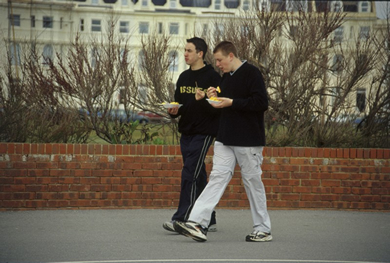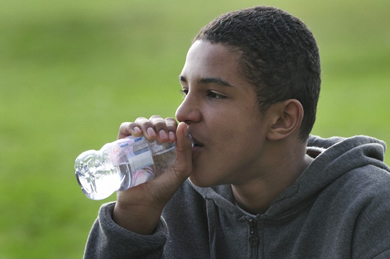Development of Normal Eating Behaviour for Nurses



This session will describe patterns of eating behaviour in young people and the factors that influence these patterns. A model derived from social and ecological psychology will be used to explain how adolescent eating behaviour can develop from four levels of influence: individual, social, environmental and cultural.
Learning Objectives
By the end of this session you will be able to:
- List the major influences on eating behaviour in adolescence
- Describe the drivers of adolescent food choices at each of the four levels of influence
- Recognise the barriers to making healthy food choices during adolescence
What images come into your mind when you think of young peoples' eating patterns? You may think of packs of young people on the streets, gorging themselves on junk food. Or perhaps a family mealtime with a silent teenager sullenly rejecting the healthy food prepared by his loving but despairing parent.
Dr Paul Chadwick is a clinical and health psychologist specialising in physical health, obesity and its management.

- Anaesthesia | Trauma | Management of life-threaten...
- Posted By eIntegrity Healthcare e-Learning
- Posted Date: 2024-11-18
- Location:Online
- Assessment and treatment of life-threatening thoracic injuries.
- Anaesthesia | Trauma | Circulatory shock in trauma...
- Posted By eIntegrity Healthcare e-Learning
- Posted Date: 2024-11-18
- Location:Online
- This session describes the clinical features and physiological responses to traumatic haemorrhagic shock. It also summarises the current understanding of the underlying pathophysiology and approaches to the management of these critically unwell patients.
- Anaesthesia | Trauma | Thoracolumbar spinal injuri...
- Posted By eIntegrity Healthcare e-Learning
- Posted Date: 2024-11-18
- Location:Online
- This session describes the pathophysiology surrounding thoracolumbar spine injury, the physiological consequences of such trauma and the management of unstable injury.
- Anaesthesia | Trauma | Management and effects of r...
- Posted By eIntegrity Healthcare e-Learning
- Posted Date: 2024-11-18
- Location:Online
- This session reviews the physiology relevant to intracranial pressure (ICP) and describes the causes and effects of raised ICP. Techniques of ICP monitoring and the use of ICP- and cerebral-perfusion-pressure-guided therapies are discussed.
- Anaesthesia | Trauma | Traumatic brain injury: an ...
- Posted By eIntegrity Healthcare e-Learning
- Posted Date: 2024-11-18
- Location:Online
- This session contains a link to the BJA Education article followed by a series of self assessment multiple choice questions.<br><br>The article will open in a new window or tab depending on your browser.<br><br> CPD credits are awarded by the RCoA for the







